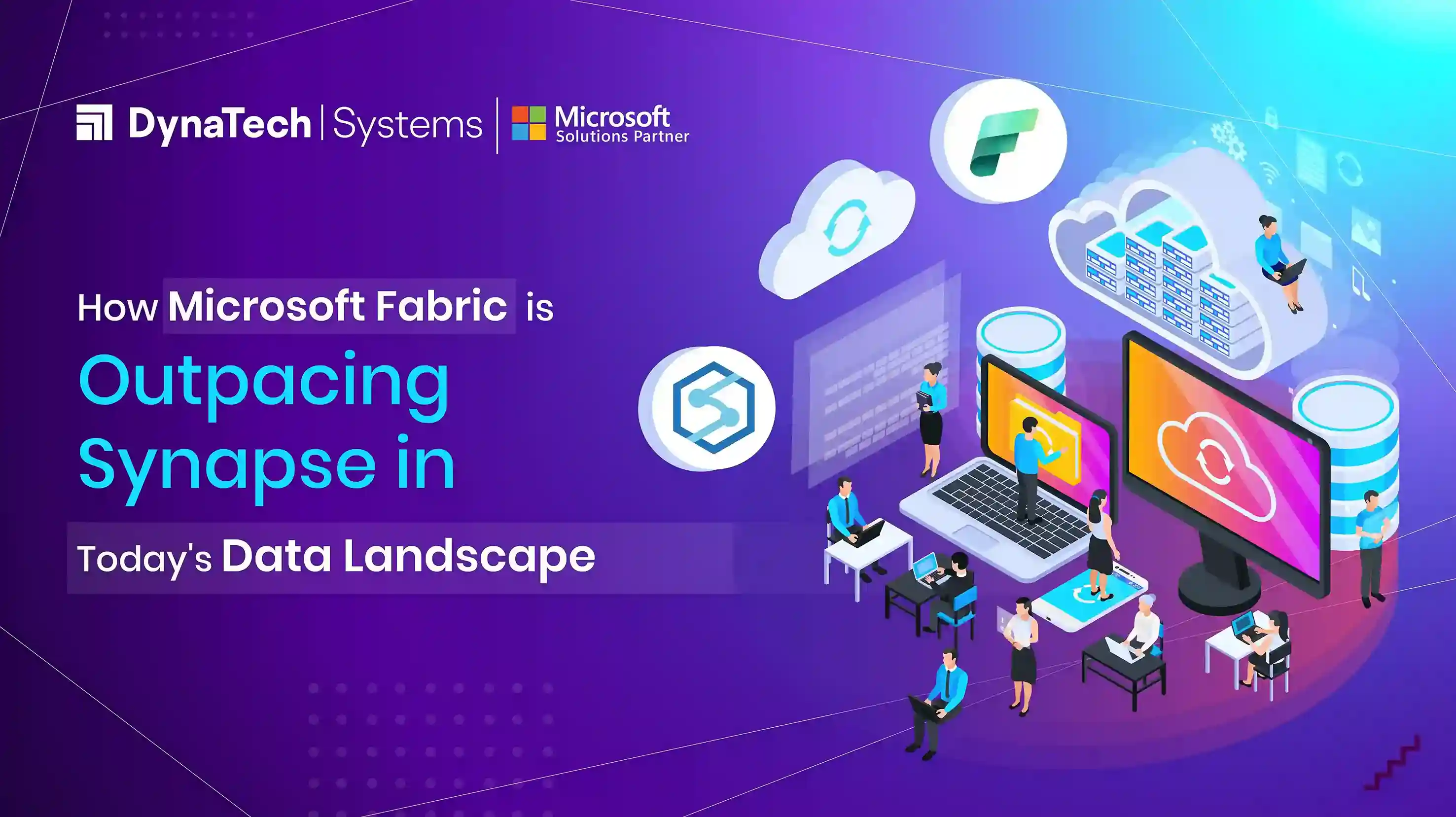Technology is growing at breakneck speed, reshaping how businesses store, examine, and optimize data. For quite a long period of time, Microsoft Azure Synapse has been a powerhouse in data warehousing and analytics which has enabled businesses to process heavy sets of information. But as businesses demand more agility, AI-powered insights, and smooth integration, an imperative question emerges—has Synapse fallen behind? Enter Microsoft Fabric, a next-generation data platform created to unify and rationalize data management like never before. With this shift, enterprises are rethinking their game plans, wondering if it’s time to move beyond Synapse. The answer lies in the evolving challenges of today’s AI-powered data landscape.
The Limitations Holding Azure Synapse Back - Why Synapse Can’t Keep Up Anymore?
Azure Synapse has been a steady data solution for enterprises, but as organizations grow, so do their data needs. Despite its strengths, Synapse presents certain challenges that disrupt efficiency and evolvement:
- Complex and Fragmented Architecture – Handling different workloads across Synapse, Azure SQL, and other services adds unwanted complexity. This makes integration and maintenance a headache.
- Lack of Real-Time Data Processing – Handling both structured and unstructured data seamlessly in real-time remains a struggle, limiting the agility businesses need.
- Escalating Costs – Scaling Synapse for enterprise workloads calls for considerable resources, driving up costs and making it less pretty easier for evolving businesses.
- Limited AI and Machine Learning – Unlike modern-age data platforms, Synapse requires supplementary tools and integrations to leverage AI-powered insights, creating obstacles in innovation.
- Complicated Data Governance – Security, compliance, and access controls call for additional configurations which augments administrative overhead.
- Performance Bottlenecks – Complex queries can create obstacles in seamless performance which impacts analytics and decision-making.
Microsoft Fabric: The Future of Enterprise Data Analytics
Modern business landscape revolves around data-driven decisions and results. Businesses need more than just conventional analytics—they need intelligence, agility, and trouble-free integration. Microsoft Fabric is the answer. As an AI-driven, all-in-one analytics system, Fabric rationalizes the way businesses store, process, and examine data. This eradicates inefficiencies and helps businesses harness new opportunities.
What Sets Microsoft Fabric Apart?
- Truly Unified Data Architecture – Unlike Azure Synapse, which needs various services for multiple workloads, Fabric brings data lakes, warehouses, and real-time streaming together into a unified, cohesive environment. No more blunders, no more complexity.
- One Lake Storage for Effortless Access – Fabric centralizes data storage; this helps businesses ensure teams have immediate access to the correct information when they require it—without dealing with fragmented data sources.
- AI at the Core – With native integration of Microsoft AI tools, Fabric makes predictive analytics, automation, and machine learning easily accessible to teams. This helps businesses empower to make data-driven decisions quickly.
- Smarter Cost Management – Fabric’s flexible pay-as-you-go model optimizes cloud spending, so enterprises only pay for what they utilize which eliminates extra expenditure.
- Built-In Security & Compliance – With advanced security and governance controls, Fabric ensures organizations carefully observe industry regulations while keeping their data secured from threats.
- Seamless Power BI Integration – Fabric’s native support for Power BI supercharges data visualization and reporting. This gives businesses clearer insights at a quick glance.
- Multi-Cloud Flexibility – Unlike conventional solutions locked into a single cloud, Fabric works smoothly across hybrid and multi-cloud environments, offering greater adaptability for modern-age businesses
Microsoft Fabric vs. Azure Synapse vs. Azure SQL: Which One Leads the Future of Data Analytics?
Choosing the right data platform is crucial for businesses aiming to stay competitive in an AI-driven world. While Azure Synapse and Azure SQL have served enterprises well, Microsoft Fabric is redefining the landscape with its unified, AI-powered approach. Here's a breakdown of how these platforms compare:
|
Feature |
Microsoft Synapse |
Azure SQL |
Microsoft Fabric |
|
Data Integration |
Needs various services, adding complexity |
Limited capabilities for large-scale integration |
Fully unified platform that effortlessly connects all data sources |
|
AI & ML Integration |
Requires third-party tools for AI-powered insights |
Minimal support for machine learning |
AI-driven analytics built-in, making data-driven decisions pretty feasible |
|
Cost Efficiency |
Can become high-budget as workloads scale |
Pricing varies based on usage |
Optimized pay-as-you-go model that minimizes cloud costs |
|
Scalability |
Limited flexibility, struggles with unstructured data |
Best for structured data but lacks real-time capabilities |
Quite scalable with real-time data processing and advanced analytics |
|
Security & Governance |
Needs extra setup for security & compliance |
Standard security features |
Advanced, built-in security and governance controls for regulatory compliance |
|
Multi-Cloud Compatibility |
Essentially designed for Azure, with limited hybrid support |
Mostly restricted to Azure-based workloads |
Completely hybrid and multi-cloud support for maximum flexibility |
Seamlessly Transition to Microsoft Fabric with DynaTech
Embracing next-generation data platforms such as Microsoft Fabric calls for more than just a simple upgrade—it asks for experienced professionals, strategic planning, and a hassle-free execution process. That’s where DynaTech comes into the play. As a reliable Microsoft Solutions Partner, we hold expertise in revolutionizing data architectures, ensuring businesses move from Azure Synapse, Azure SQL, or hybrid environments to Microsoft Fabric with no room for disruption and maximum efficiency.
Why Choose DynaTech for Your Microsoft Fabric Migration?
We don’t just migrate your data—we help you harness its complete potential with a structured, cost-effective, and AI-driven approach. Our expertise ensures that your business leverages Microsoft Fabric’s capabilities from day one to scale your operations.
Final Verdict: Is Microsoft Fabric the Future?
As data demands evolve, Microsoft Fabric stands out as the next-generation solution—providing AI-powered insights, effortless scalability, and cost-efficient analytics. While Azure Synapse and Azure SQL have been trustworthy, Fabric’s unified ecosystem reshapes enterprise data management.
For organizations ready to adopt the future, Microsoft Fabric is the way forward—and DynaTech being a Dynamics Partner is here to ensure a smooth and optimized transition.




























